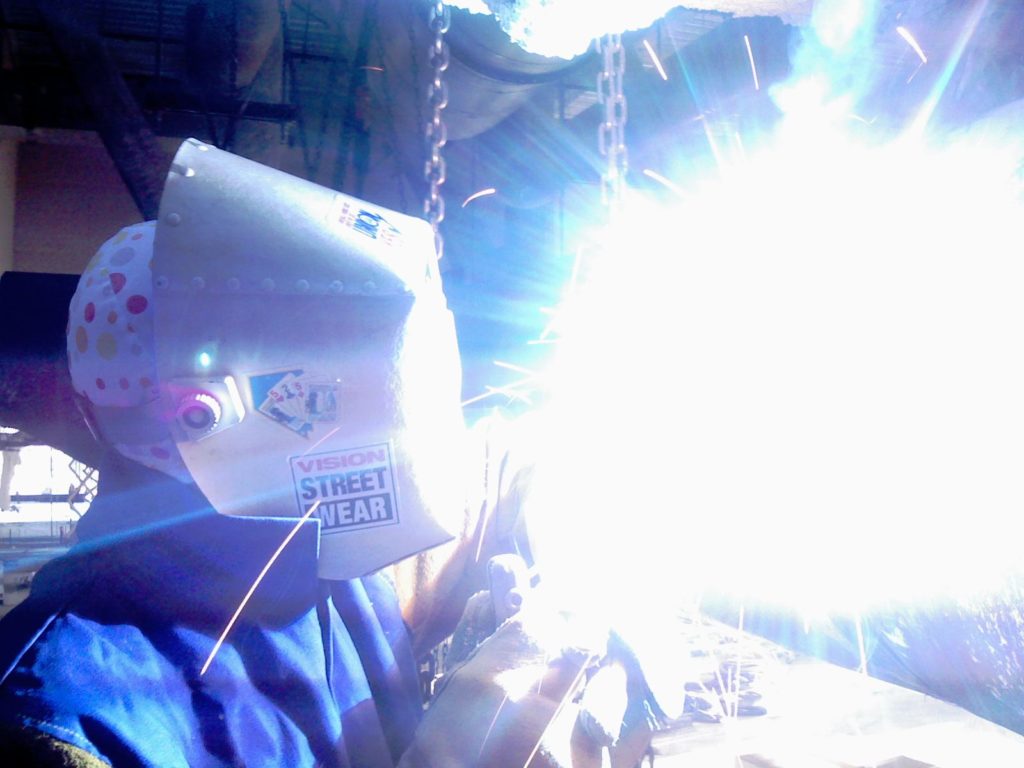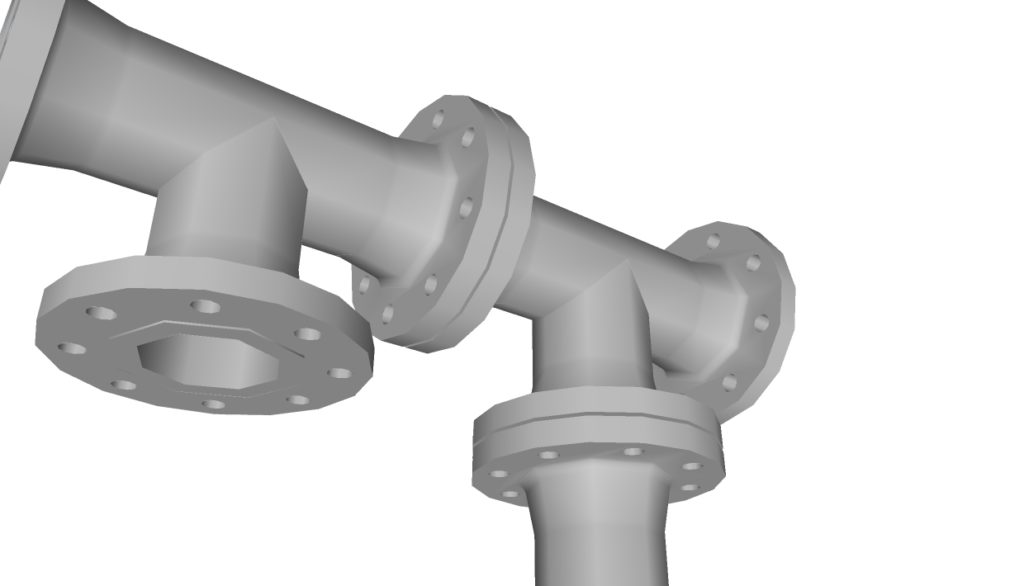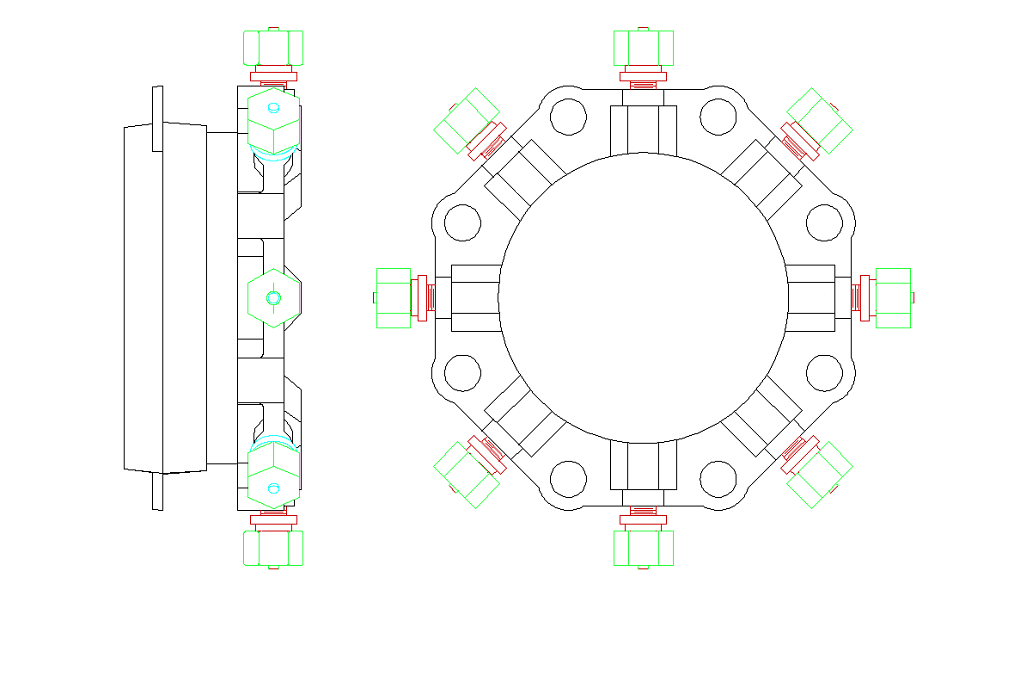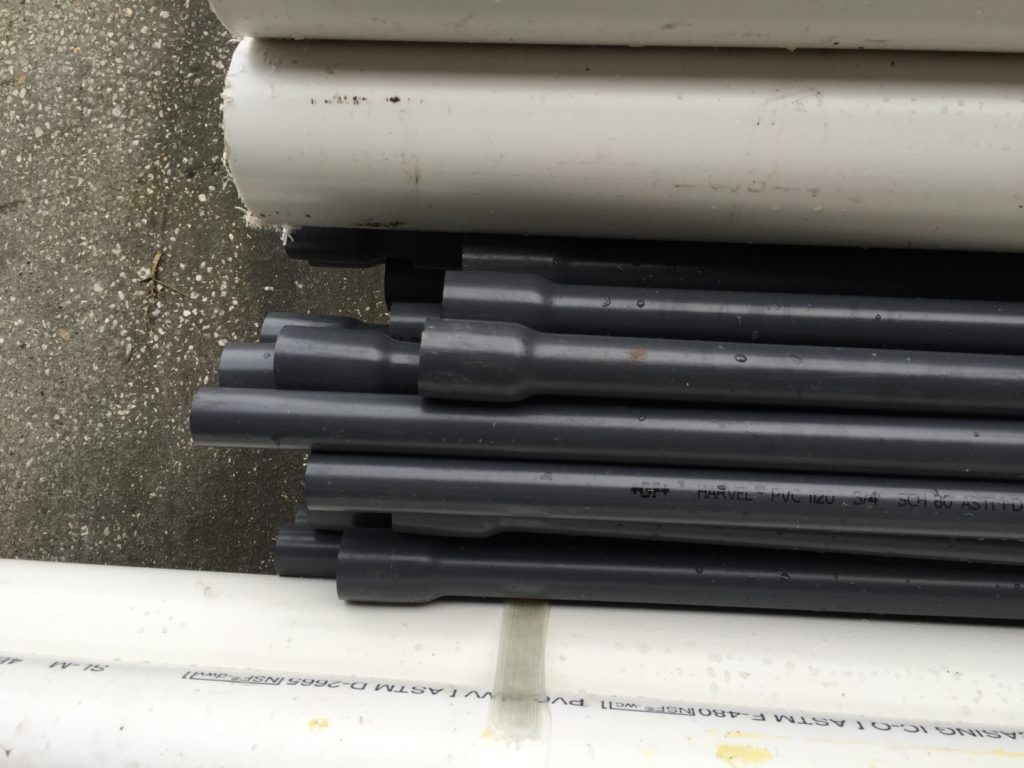Types of Pipe and Tubing Connections and When You Should Use Them
Unlike its cousin tubing, pipe is a rigid product. It cannot be coiled or shoved into a box or rolled up. But what about copper, PVC Guy? Sorry, but copper “pipe” is actually considered tubing. Due to transportation constraints from factories to its final location, pipe has to be cut down to manageable sizes. These manageable sizes can range from 40 feet lengths to 1 – inch lengths, but whatever the manageable length is, it may not be enough for your project. So you ask, how do you achieve plumbing runs of hundreds or even thousands of feet? Utilizing connectors. This post is to provide you with information of the various types of pipe connections and how/when to use each one.
To achieve the needed lengths and turns in pipe required to complete your project you have to connect pipe in consecutive runs, which is where pipe connections come into play. Some connectors are better suited for different materials and some can only be used by one material like solvent welding PVC pipe.
Pipe fittings come in all varieties, there are elbows, T fittings, reducers, nipples, and all sorts of connections used on pipe but instead of discussing the types of fittings used in pipe, this article will focus on the connection itself and the advantages of each.
It’s important to note that many connections and fittings are made in different ways that physically touch the pipe. Male adapters go inside of the connection, while female adapters encompass the male ends. Other connections are made butt-to-butt.
Soldering/Brazing/Welding
Thermal joining methods of physically connecting pipe together with a solder or by fusing the pipes ends together without an intermediary metal. The two most prominent metallic pipes in the plumbing/mechanical industry is ductile iron pipe and copper pipe but can apply to steel, aluminum, and other metals.
Soldering, commonly known as sweating, is a building a connection between two pipe ends that overlap one another. Solder can be any metal (lead was commonly used but is no longer allowed for potable systems) with a lower melting point that the pipe that needs to be connected.
After heating the ends, solder is touched to the pipe where it melts and through “capillary action” draws the solder into the joint. Flux can be spread over the pipe ends or it can be included in the solder to help it better draw into the joint. Soldering/sweating is typical in copper piping in residential plumbing and HVAC applications where there is relatively low pressure and less need for strong joints.
Brazing is the same process as soldering but with using a higher melting point solder and produces a stronger joint. It is used for joining brass, bronze, steel, and other materials is is one step below welding in terms of strength.
Brazing and soldering are both used in mechanical systems to connect pipe for a cheaper cost than mechanical connections. It does, however, require a certain degree of skill and technical knowledge to create strong joints. Brazing also utilizes overlapping pipe and fittings.

The strongest of the thermal joining processes is welding. The pipe is not necessarily overlapped but is instead fused butt to butt. Welding requires very high temperatures to fuse two pipe ends together on the molecular level. This requires very specialized training and typically takes place in fabrication shops or possibly in the field if required. For general pipe work, it is prohibitively expensive but is widely considered to be one of the strongest ways of joining pipe as a long-term solution.
Solvent Welding
Solvent welding is a similar process as metallic welding without the heat. It is used for joining plastic pipes such as PVC, CPVC, ABS, and their variations. Instead of relying on heat to form the joint, solvent welding is the process of partially dissolving the pipe in a solvent and as it hardens, it becomes fused together on the molecular level. The cement used in the process also acts as an adhesive to prevent any joint failures, although it’s the solvent that actually waterproofs the joint.
Read more on PVC Solvent Welding here.
Mechanical Connections
The above joint processes are all permanent fixtures that alters the molecular integrity of the pipe itself. Sweating copper has a far less permanent effect than solvent welding PVC and could be argued it is not permanent. But it depends on your definition of permanent.
Mechanical fittings are those that can be easily removed and replaced again if necessary with one notable exception – compression fittings. Mechanical connections are those that require some element of threads of hardware to secure the joint. It encompasses many other specialized connections but below we will outline the most commonly used mechanical connections.
Flanges
Flanges are considered very strong connections, and can be prefabricated to the correct sizes. Many times, flanges are used in industrial applications with high pressures and large diameter pipe. You can use flanges with a variety of materials, but the cost makes its use most efficient with steel pipe.

A flange is just a flat, perpendicular surface on the end of both pipes being connected. A seal is placed between the two flanges and the flanges are butted up together. Several bolts and nuts are used to create a very strong connection between the pipe and the seal provides a water-tight bond.
One disadvantage of flanges is the lack of length adjustment in pipe. You cannot cut a flanged pipe and still be able to make a connection. True flanges are typically welded or secured to the pipe to create a permanent fixture. However, what separates flanges from welds is they can be disconnected for repairs and then reconnected with ease.
A notable aspect of flanged connections are the great ability to connect pipe to a flat surface, like a building or to the hull of a boat. Sometimes flanges are used in engines or other enclosed mechanisms that could require future access but need strong compressive forces to prevent failure.
For very large industrial or municipal utility applications there are products called restrained flange adapters. They are less ideal than welded flanges, however they offer the flexibility of adjusting pipe lengths in the field. They are very bulky, expensive, and take longer to assemble in the field.

Restrained flange adapters have a significant amount of hardware used to attach itself to the pipe, compressing itself to the pipe end and more hardware to the connecting flange. Not only is there a seal between the flanges, but also seals between the pipe and adapter itself.
Threaded Pipe
One of the easiest connection pipes to use is threaded pipe – that’s assuming everything is the perfect length. Galvanized steel pipe pre-dated copper tubing in residential applications and much of it was threaded pipe. Many times threaded pipe is used for conduit or other non-water tight purposes.
The problem with using threaded pipe is not being able to shorten the pipe length due to a loss of threads on the end. The pipe can be re-threaded but it is a tedious process and adds a lot of time and labor to the process.
Many times you will find threaded pipe and fittings as end connection points. Hose spigots are the perfect example, as the pipe threads are generally universal for a given diameter and can easily attach to a hose or other adapters.
There are two primary pipe threads used for pipe plumbing in the U.S.. National Pipe Thread Taper (NPT) and National Pipe Straight (NPS) both have the same angle at 60° and general shape. The major difference is the NPT is tapered so that when the pipe and fitting are compressed against each other as they are tightened. It makes a relatively water-proof bond. NPS, on the other hand, has parallel threads which act similarly to a nut and bolt. To make NPS water tight, washers, o-rings or gaskets are used between the male and female ends.
Other thread types include military derived AN thread, flare fittings, and garden hose thread (GHT) to name a few. Outside the U.S. you will probably run into British standard pipe (BSP) which has been internationally accepted as the standard thread type (excluding the U.S., of course) or the whitworth family of threads.
If you are depending on the threads between pipe and fittings to waterproof your piping, it’s a good idea to use pipe dope or teflon tape to secure the connection and fill in any voids. Petroleum based pipe dope should not be used on any plastic piping but provides great seal protection and anti-seizing characteristics with metallic pipe. On plastic pipe or metallic pipe, teflon tape (also known as plumber’s tape) can be used.
Pipe threads are considered a relatively strong joint. In regards to how waterproof a joint is depends on how well it was threaded and if additional precautions were taken to fill any voids. Aside from not being able to easily adjust the length of threaded pipe, stripped threads can also be a major problem when trying to fix or replace pipes.
Compression Fittings
Compression fittings are secured by squeezing tubing into itself to form a water-tight bond. A traditional compression fitting is composed of three pieces – there is a threaded male and a threaded female bolt and nut that form the compressive forces and a compression ring that actually does the sealing.
This type of connection is much easier than sweating and requiring nothing more than a wrench to tighten but can cause leaks later on. Compression fittings offer the weekend DIYer and easier alternative to sweating copper pipes but are ideal for plastic tubing.
To connect a compression fitting, the female nut is slipped over the tubing facing the connection end. Next the compression ring (sometimes called a ferrule) is inserted into the nut but should be blocked by the tubing from sliding past the end. As the male end is tightened into the female nut, the compression ring is pushed tight into the tube, creating a water-tight connection to the hardware. On the other end of the hardware body can be a number of different connections but is primarily a nut that can be screwed onto a valve or other fitting. Sometimes the compression fitting is part of a valve. Essentially, it is a way to turn a tubing end into a threaded fitting.
An alternative to using a compression ring (which by definition is not a compression fitting) is a flare connection. It uses the same concept, but a tool is used to flare out the end of the tubing before the male and female nuts are tightened.
One type of compression fitting that is greatly growing in popularity are “push-fit” fittings. These have a built in compression ring and require no tools at all. Tubing or PVC is inserted into these connectors and are held in place by claw-like points to prevent slippage. The actual mechanisms of these connectors vary from brand to brand due to patent protection but they all use the same general concept.
While push-fit fittings have typically had a bad reputation for leaks, progress on designs have vastly improved their effectiveness. Still, they are less strong and desirable than solvent welding or sweating pipe and should only be used for fixing hard-to-reach problems or when the alternatives are not possible without significant modifications to existing plumbing. Generally speaking, they work better with softer materials like HDPE.
Hub & Spigot
Hub and spigot pipe is a cross between several of the above mentioned connectors. It is worth mentioning due to its prevalence in the plumbing industry even though it is not necessarily a connection in the sense that it utilizes an above technique to properly secure the joints.
A hub, also known as a bell or socket, is an enlarged part of the pipe. It is a manufactured female end to the pipe that acts as a coupler. To attach, a straight piece of pipe (spigot) is inserted into the hub and secured. These systems are common when longer lengths of pipe are needed due to the ease of connection like drainage lines or irrigation. For non-plumbing, it is commonly found in electrical conduit systems.

Smaller diameter PVC is typically glued together via solvent welding. Larger diameter PVC could be glued but usually has a locking gasket that works similarly to the push-fit system used in compression fittings.
What makes hub and spigot pipe so useful is not needing any couplings. The spigot end of the pipe can be cut down to size since it is the same diameter as the pipe itself and connected directly to the other pipe. No coupler is required, reducing two joints down to one.
Many people ask what direction to face hub and spigot pipe. Technically, the correct direction is to face the spigot downstream with the hub facing the source of the water but it really doesn’t matter. A coupler produces the same amount of surface friction on both sides, so by reducing the joint friction on one side helps the flow, regardless of the side.
Barbed, Crimped & Clamped Connections
Crimped and clamped connections are my least favorite way of connecting pipe and tubing. Crimping is generally considered one of the weaker connections, requires specialized tools, and specialized crimps. Clamping is typically even weaker but can be tightened with a screwdriver.
Crimping is common on PEX pipe and copper tubing. There are two ways to crimp; the first is the crimp a fitting directly to a pipe, which is how clamps work. The second possible way to crimp pipe is by crimping the excess hardware on the side of the pipe which tightens the remainder of the crimp around the tubing, compressing it to the barb fitting inside the tubing.
A barb fitting is a connector that slides into the inside of a tube. The barbs help prevent it from slipping out. In many situations, a clamp or crimp is not required but for more important or pressurized connections, it’s a good idea to crimp or clamp it.
Crimps and clamps are used extensively in residential, marine, and recreational applications but are rarely used in mission critical connections. The advantage of using clamps over crimps are the ability to easy disconnect and reconnect with no additional hardware or crimpers.
Hardware
The final pipe and tubing connection you may run into is simple hardware connections. That is, pipe connected with a screw or bolts. These are not water-tight connections. You may find them for simple, not plumbing projects like construction of a kayak dolly or fishing cart, for example.
It can be a preferred method for connecting PVC pipe when the project needs to be disconnected frequently but requires rigidity that tubing cannot provide. Wing nuts can be used for hand tightening and typically people prefer to use stainless steel hardware, although anything can be used.
With hardware, anything goes! You can use your imagination and make all sorts of connections that do not require any pressure.
It is really interesting to see what types of connections are stronger than others. A flange seems like a simple design, so it is impressive that it creates such a strong joint. You mentioned that they can be taken apart and reconnected easily, but don’t you need a special tool to spread them apart?
For large, industrial flanges absolutely. For smaller flanges for pipe to wall connections or pipe to pipe connections, not really.
Pipe Termination Point specifications are necessary only to add characteristics to capture specific information about the termination point, to associate rulesets to the termination points, or to limit the types of resources with which the termination points can be associated.